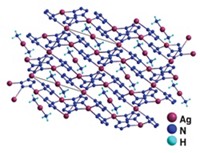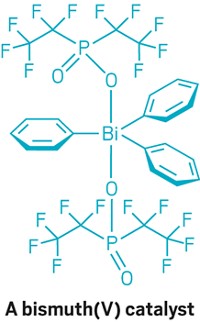Advertisement
Grab your lab coat. Let's get started
Welcome!
Welcome!
Create an account below to get 6 C&EN articles per month, receive newsletters and more - all free.
It seems this is your first time logging in online. Please enter the following information to continue.
As an ACS member you automatically get access to this site. All we need is few more details to create your reading experience.
Not you? Sign in with a different account.
Not you? Sign in with a different account.
ERROR 1
ERROR 1
ERROR 2
ERROR 2
ERROR 2
ERROR 2
ERROR 2
Password and Confirm password must match.
If you have an ACS member number, please enter it here so we can link this account to your membership. (optional)
ERROR 2
ACS values your privacy. By submitting your information, you are gaining access to C&EN and subscribing to our weekly newsletter. We use the information you provide to make your reading experience better, and we will never sell your data to third party members.
Materials
Simple synthesis produces environmentally friendly energetic material
DTAT-K could be an alternative to lead azide primary explosives
by Bethany Halford
March 23, 2023
| A version of this story appeared in
Volume 101, Issue 10
Chemists looking to make explosives will often load their molecules with nitrogen atoms, which release energy as they break apart to form N2 and other small molecules. Researchers have now prepared the first example of a nitrogen-packed [5,6,5]-tricyclic bistetrazole-fused compound. The potassium salt of this molecule, which the researchers named DTAT-K, has properties that could make it an environmentally friendly primary explosive (ACS Cent. Sci. 2023, DOI: 10.1021/acscentsci.3c00219).
Guangbin Cheng and Hongwei Yang at Nanjing University of Science and Technology and Chuan Xiao at Norinco led the researchers who discovered DTAT-K. The chemists were simply trying to substitute azides for the chlorides on 4,6-dichloro-5-nitropyrimidine—an inexpensive and commercially available starting material. But they were surprised to find that after the substitution occurred, the molecule spontaneously cyclized to form the [5,6,5]-tricyclic bistetrazole-fused motif and appended an additional azide group.
Swapping the sodium ion for potassium produced DTAT-K. The compound has detonation properties that are comparable to lead azide, a commonly used primary explosive that’s a source of heavy metal contamination at military training grounds. DTAT-K is safer to handle than lead azide, so it could be a replacement free of heavy metals.





Join the conversation
Contact the reporter
Submit a Letter to the Editor for publication
Engage with us on Twitter